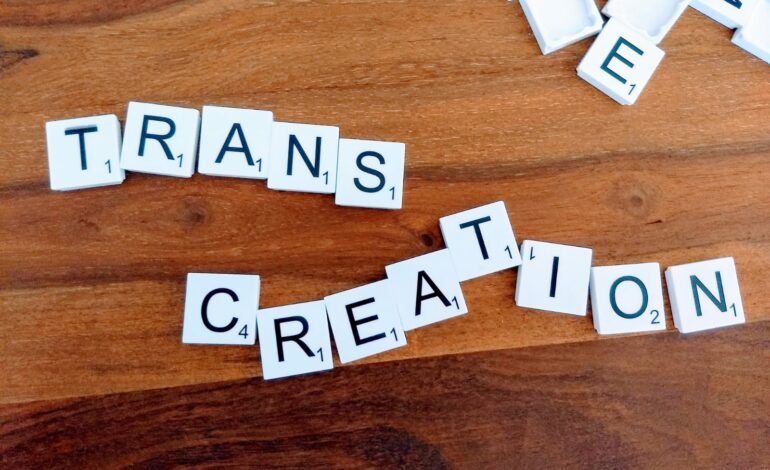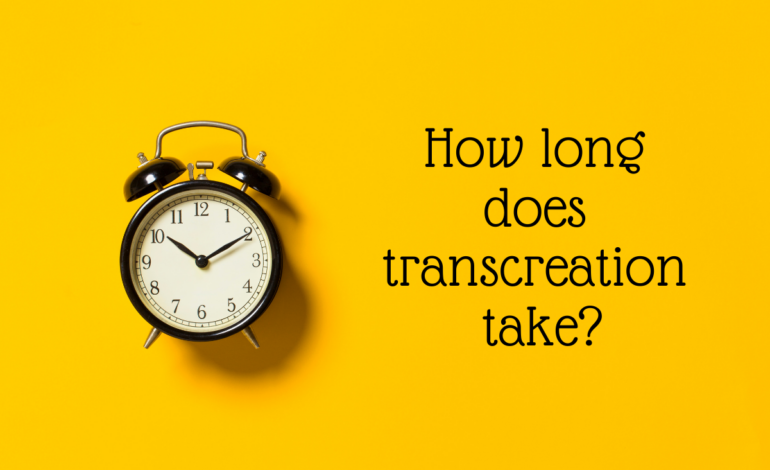Neither translation nor localization: What exactly is transcreation?
Although transcreation is becoming an increasingly popular service, many struggle to understand what it actually entails. Is it like creative translation? What does it have to do with copywriting? And how is it any different from localization? We try to make sense of all these confusing terms.
1. “Trans… what was it again?”
It’s a phrase we hear often when we speak to colleagues, friends, and clients about our favorite service: transcreation. Responses range from “Did you mean to say transcription?” to “Does it have something to do with the word ‘transgender’?”. We’ve heard it all. And truth be told, we’re aware that “transcreation” isn’t all that easy to pronounce at first. Perhaps a more sophisticated neologism would have been better suited to describe this elaborate service.
But the fact that the word “transcreation” is starting to become commonplace throughout the world is also positive. After all, the term sums it up perfectly. That’s because a transcreation is a mix of two different services:
Transcreation = translation and creation.
Transcreation combines elements of translation and creation (or copywriting). In other words, a text is translated into another language as though it had been copywritten for the customers in that specific country or region. And here copywriting means more than just writing: It involves crafting a message with a specific target group in mind, one that appeals to readers and persuades them to put their trust in a company or purchase a certain product.
In the following paragraphs, we look at how transcreation differs from standard translation.
2. Translation vs. transcreation
Both translation and transcreation involve a text being rendered from one language into another. Both require intricate knowledge of the source language and the target language. And it is absolutely essential that the right terminology be used. Yet translation and transcreation are two quite different skills.
a. Translation: as accurate as the original
Translation involves the conversion of a written text from one language into another. If you were to place both texts side by side, you would see that all the information is exactly the same in both language versions.
Here is an example of a typical candidate for translation:
A software provider needs to have a user guide for their latest application translated into another language. This requires absolute precision as otherwise misunderstandings and a rise in incoming customer support requests will be inevitable. To ensure users are able to follow the instructions quickly and independently, the translation must use expressions correctly and each piece of information must be conveyed with the utmost accuracy.
Conclusion: A translation is required for all texts that primarily aim to inform a reader, e.g. manuals and help articles, as well as legal or academic documents.
b. Transcreation: as effective as the original
Transcreation also involves the rendering of a text from language A to language B. However, the translation is not linear but focused on conveying the underlying message and achieving the same effect. If you were to place both texts side by side, you would quickly see that the content of the original and the target text sometimes differs considerably.
How about an example, you say? Let’s look at the now-classic slogan used by German electronics store chain Saturn:
Geiz ist geil.
Whether you like the slogan or not, it is universally recognized in the German-speaking world where it is instantly linked to electronic goods sold at bargain prices. But how should we go about translating it into, say, English?
Stinginess is awesome.
Linguistically, there is nothing to fault. And yet even the untrained eye can spot that the English version is not as effective as the German original. This is partly down to the alliteration of the German slogan, which gives it that extra flair.
But even if we were to go for a slogan that rhymed (“Stinginess is awesomeness”), the message still wouldn’t be as catchy and effective as in German. We need a completely different formulation that reflects what the company offers but aims to preserve the emotional impact of the original slogan.
Conclusion: Transcreation is the right solution for those texts whose main objective is not to inform but to convey a specific emotional message and encourage a specific action, e.g. advertising that aims to generate enthusiasm for a product or PR copy designed to present a company in the best possible light.
Can’t we just call it “localization”?
Transcreation is also sometimes mistaken for localization. As both approaches focus on culturally adapting the target text to the target market, this can, of course, easily cause confusion. But each involves a different method.
Localization is the process of adapting content or a product to the respective market. This means not only ensuring accuracy, as is the case with translation, but a text that complies with the cultural conventions of the target country. Here are a few examples:
- In the US, dates are usually written in the following format: “MM/DD/YYYY”. If a text needs to be localized for the German or even the UK market, dates are written “DD/MM/YYYY” instead.
- If an online store is looking to market their apparel internationally, the brand must be aware that clothing sizes differ depending on the country. For instance, a size 38 in Germany would be a size 40 in France and a 42 in Italy. To ensure customers’ orders fit and the store isn’t inundated with avoidable returns, it is vital to know exactly how sizing works on your target market.
- In the popular fantasy novel and television series Game of Thrones, names that sound foreign to international audiences, such as King’s Landing, the capital of the Seven Kingdoms, are adapted for each country. In Germany, the capital goes by the name Königsmund, whereas in France it is Port-Réal.
Conclusion: As well as translation, localization takes into account cultural associations, such as currencies, units of measurement, and clothes sizes, along with certain expressions or references specific to a certain territory, to ensure that the text makes sense on the target market. User interface options for software, product details for online stores or video and film content are prime examples of text requiring localization.
Transcreation goes one step further than localization: Individual elements are still adapted, but a transcreated text may also depart completely from the source text if it is deemed necessary to effectively convey the underlying message. This process is suited to content focused on achieving a certain effect, such as copy used in branding and advertising.
Is transcreation similar to copywriting?
To a certain extent, yes. After all, each transcreation requires a hearty dose of conceptual thinking. But the difference is that copywriters design and write content from scratch with the respective target group in mind. The basis for this is always a brief in which the copywriter works together with the client to establish the objectives, the target audience, the desired tone of voice and the effect. Transcreation specialists also work with a brief when transcreating, but they have access to the original text, which they must stick to as closely as possible, presenting them with an additional challenge.
Transcreation – a combined service for advertising and emotive copy
As we have seen, transcreation is multifaceted and encompasses several services. Translation, localization, and transcreation are all geared towards creating a premium-quality text that is easily comprehensible for the target market. Knowing which service is right depends on each specific project. If a text is designed to elicit a response from the reader, for instance, getting them to make a purchase or sign up to a service, then transcreation is clearly the right way to go. So if a text needs to have a specific impact, you need a mix of translation and copywriting: Time for a “Trans-Creation”.



